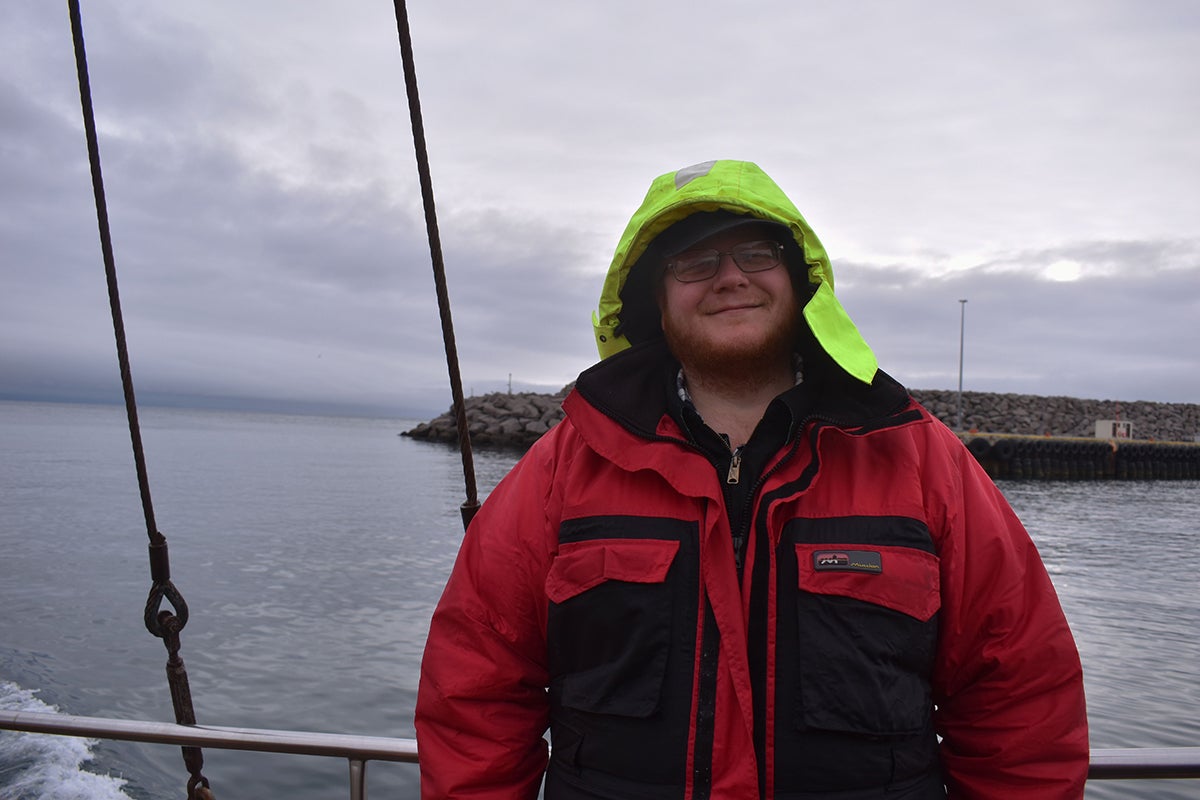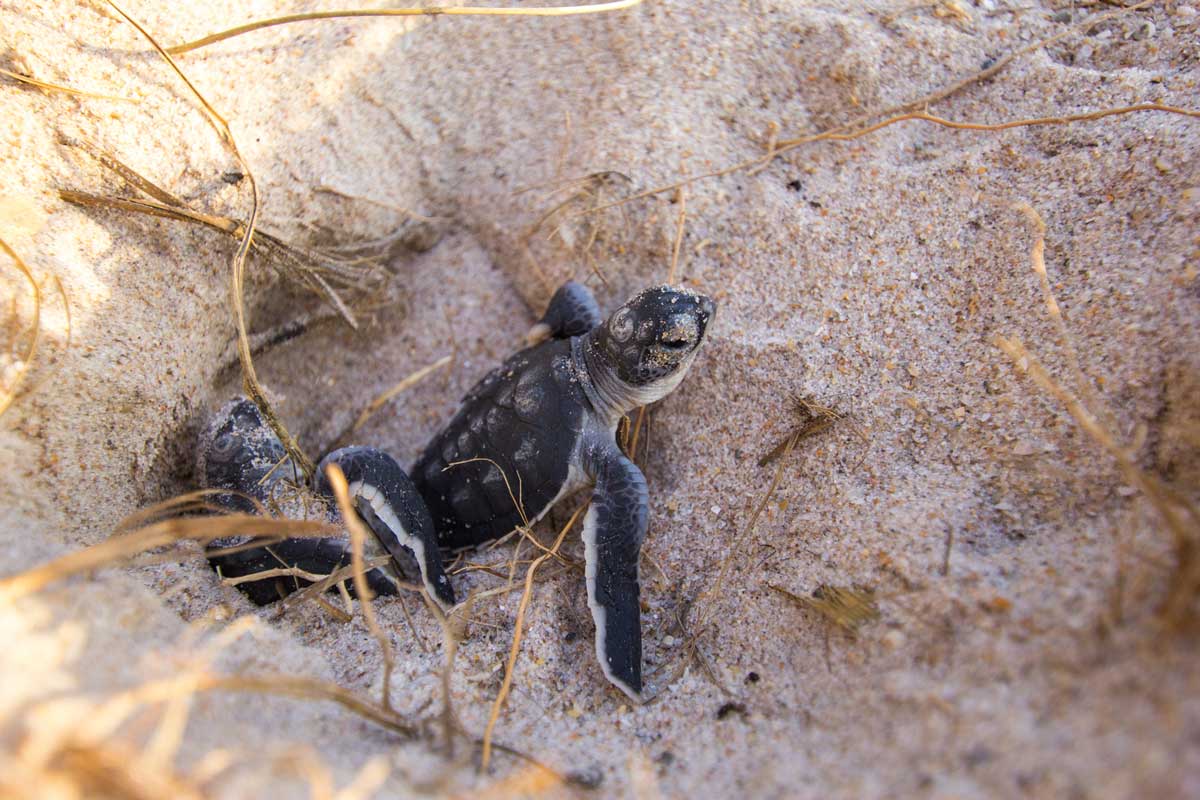NASA has awarded Alexander Sacco a Future Investigators in NASA Earth and Space Science and Technology grant to use satellites to help track sea turtle yearlings in the Atlantic Ocean. It was one of 62 awards made nationwide.
“It’s not what you would typically think of when you hear ‘NASA grant,’ ” says Sacco, who is leading the project and pursuing a doctorate degree in integrative and conservation biology. “[But] I’m excited for this unique opportunity from NASA.”
Before coming to UCF to work with sea turtles, Sacco earned his master’s degree at the University of Alaska Fairbanks by studying changes in sea ice and its impact on the local walrus population. Walrus are critical to many Alaskan Native communities in the Bering Sea because they are essential for community needs, Sacco says. He will apply the same mathematical and computer skills he used on the Alaska project to the sea turtle work here.
Sacco will be building an algorithm that tracks the brown algae sargassum as it makes its way across the Atlantic Ocean from the Gulf of Mexico to the Caribbean and the east coast of Africa. Sargassum, provides a safe place for sea turtle yearlings to float on during their early days of life.
The algae clumps can be a few inches to a couple of miles long and also provides other sea life with a source of food. Unfortunately, these mats of sargassum occasionally wash ashore — a problem that has made the news over the last few years. Scientists aren’t quite sure why this happens, but the impact is clear. The clumps can hurt water quality surrounding coastlines and could be impacting coral reefs. The murky water and rotting smell caused by these beaching events in the Gulf of Mexico and the Caribbean are also impacting beachside communities that rely on tourism and recreational fishing.
Sacco’s algorithm will use American and European satellite images and radar data to create models that track sargassum. The radar is important because it can see through the clouds that cover the Atlantic Ocean. This will allow scientists to see the changes more clearly, offer clues about why sargassum may be degrading and determine how the change may impact the survival of endangered and threatened sea turtles.
Florida is in the heart of the migration path of several sea turtle species. Central Florida’s eastern coastline is among the most important nesting areas in the world for loggerhead sea turtles, and it also hosts about one-third of all green turtle nests in the state.
The computer model should also be able to help provide information for better predictions of where sargassum will come ashore, potentially helping communities prepare for or prevent the beach events, Sacco says.
The data collected will also provide information that could help researchers understand the sea turtles’ behavior while they float atop sargassum during their “lost years.”
“Lost years” refers to the period of time after the sea turtles hatch on beaches and head into the ocean and when they return to forage for food as juveniles several years later. Not a lot is known about this period of time, which is why it is nicknamed the “lost years.”

Sacco loves a good mystery. It is what led him to his work in Alaska and why he made his way to Florida in 2016.
Sacco read about UCF Associate Professor Kate Mansfield’s work tracking sea turtles in the Atlantic Ocean during the mysterious “lost years.”
“I thought that my previous experience could help uncover the mystery of the sea turtle lost years,” he says.
Mansfield, who teaches biology and leads the UCF Marine Turtle Research Group is eager to see Sacco’s results.
“We know so little about how these young turtles interact with their oceanic environment,” Mansfield says. “We know they associate with sargassum, but we don’t know how much time the turtles spend in this habitat, and we don’t know what happens when these mats and safe habitats get blown apart with changes in the wind direction or sea state. If we can better predict when and where young turtles are most likely to stay with a sargassum mat, we can design better management policies to help protect these species.”
Sacco has a bachelor’s degree in applied mathematics from SUNY: Empire State College in New York and a master’s degree in geophysics from the University of Alaska Fairbanks. He has co-authored several journal articles and expects to complete his doctorate in 2022.




